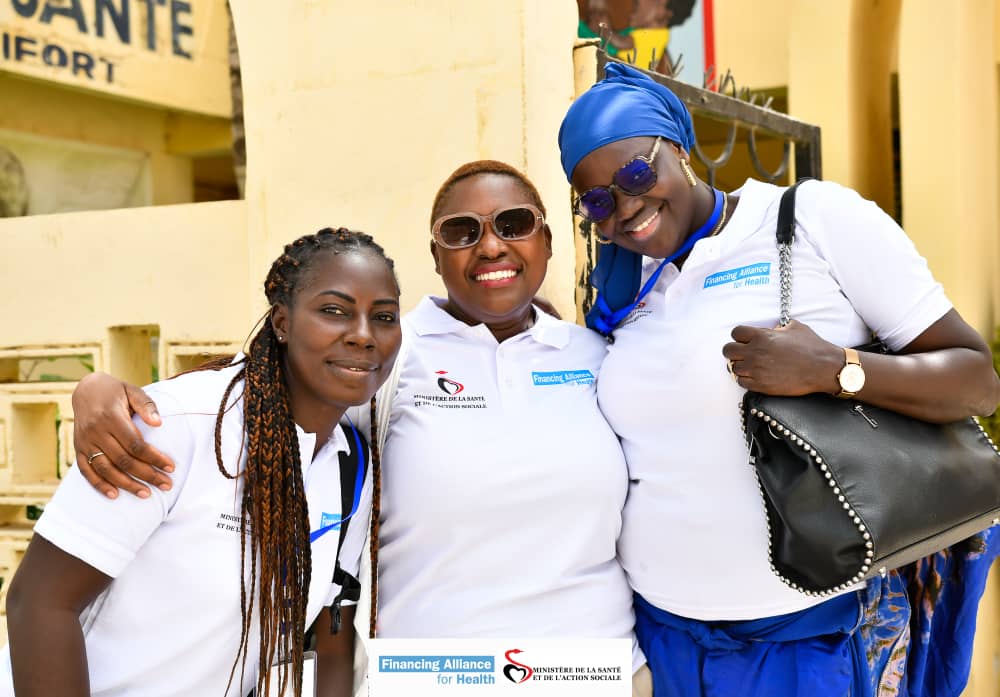As of 2013, there was a global shortage of 17 million health workers who could provide essential primary health care services. The highest shortage of workers is felt in Africa and South-East Asia. WHO projects that by 2030, there will still be a huge deficit, estimated at ~14 million workers. In Africa, closing the projected gap of nearly 1 million doctors by 2030 would require increased investment into the capacity of medical schools at an estimated cost of ~$20 billion for construction alone. That would be an economically daunting endeavor, with limited feasibility.
While supply of health services is a major barrier to health care access, there are also demand challenges, high levels of poverty being the main contributor. For example, in Kenya, 21% of the population did not seek medical care in 2013, due to unaffordability. Further, ~6% of households at the time were at risk of falling into poverty as a result of health care expenditures depleting household savings. And the situation is only likely to worsen with the rise in poor people in Africa. According to the World Bank, there is a steady growth in the number of poor people, with the most optimistic scenario showing an increase from about 280 million people in 1990 to 330 million poor in 2012.
Populations across the continent also experience a lot of difficulty in accessing physical medical infrastructure. A study revealed that almost a third of the total population in Africa lives more than two hours from the nearest hospitals. These estimates vary across countries; in countries such as Kenya, South Africa and Nigeria, more than 90% lived within the two-hour band, while in South Sudan Central African Republic, Chad and Eritrea had between 50% – 75% lived outside the two-hour band.
Despite this myriad of challenges, community health and specifically community health workers, have proven to be a sustainable solution to bring health services closer to the population. Yet, the community health structure as we know it is at risk, due to disenfranchised workers. Over the years, the rate of attrition amongst CHWs has steadily increased with higher rates generally associated with volunteers. Rwanda for example, despite its strong volunteerism culture, has an attrition rate of 10%[1] while Kenya is at 40%[2]. Community health systems typically face challenges (to varying degrees) in recruitment and training, supervision and mentorship, equipping, motivation and retention, and leadership and governance. However, in order to address the drivers of attrition, particularly in a resource constrained environment, it is important for policy makers and development partners to set aside their own assumptions about CHWs, and gain real insight into their needs. One such study, What do CHWs want? did exactly that.
One of the main takeaways from this study is that a combination of financial and non-financial incentives are key in keeping CHWs motivated and retaining them in the workforce. In this study, ASHA’s (volunteer CHWs in India) were asked to select motivators from a choice of job benefits that included training leading to promotion to the next level (auxiliary nurse midwife), salary, free family health-check and free household products. Training leading to career progression, followed by a fixed monthly salary, and lastly priority free family health-check at the local health center emerged as key motivators. In fact, the opportunity of promotion was so important that 85% of the participants were willing to sacrifice up to US$35.45 out of their monthly salary for a job that offers them career progression. While training with a promotion opportunity is not a direct financial incentive, it offers the CHWs an opportunity to progress to the next cadre with higher salary, more authority and recognition.
While this study was specific to the India context, the findings are consistent with FAH’s learnings from the various countries we support. Across the board, CHWs are calling on governments to institutionalize the cadre within the formal health system. Institutionalization not only means recognizing these workers in the structure of the system, but providing benefits similar to those enjoyed by other cadres, such as opportunities for career progression and a monthly salary. By doing so, the country will be able to provide access to healthcare to those who need it the most.
Policy makers should view investment in community health workers as an investment and not a cost, and there is overwhelming evidence to this effect. For every dollar invested into community health workers, governments can generate up to a tendollar return, when accounting for increased productivity from a healthier population, the avoidance of the high costs stemming from health crises such as Ebola or Zika, and the economic impact of increased employment. Immediate savings can also be made from reduced spending on treatment of preventable diseases. These cost savings can be significant in a country like Uganda, where the burden of disease is ~75%. Without community health and specifically community health workers, there will be a significant delay in the attainment of UHC. It is pertinent that the political commitments towards UHC, translates into budgetary allocations towards facilitating this cadre to work.
Countries should not feel overwhelmed as they contemplate adding another expenditure item to an already-bulky wage bill. Multiple approaches and instruments exist which can be used to finance community health workers.
We only have about a decade to the deadline for the SDGs. We should not squander this opportunity. Let us be bold and ambitious in our quest to transform the lives and health of our people.
[1] Liverpool School of Tropical Medicine, Comprehensive Evaluation of the Community Health Program in Rwanda Final Report, 2016
[2] Ministry of Health


